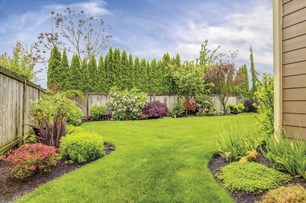Homeowners understandably envy the award-worthy photo spreads in lawn and garden magazines, wanting to emulate those same looks on their own properties.
Scores of designers and landscape architects are involved in creating those amazing lush lawns and perfectly placed plantings, and although not every homeowner has the budget for such lavish designs, it's still possible to create landscapes they can be proud of by following these tips:
- Establish your budget. The first step in any project is to determine how much money you can devote to the job. Once you have established the budget, all other factors can be built around it.
- Find an inspiration piece. Great landscapes are inspired by many things, whether it's a memorable piece of art or a layout in a lawn and gardening magazine. Use photos of other gardens or neighbours' yards as inspiration and build off of them. As long as the theme is cohesive, it will look pleasing to the eye.
- Consider the space and how you want to use it. Understanding the space will help you better allocate your budget. If your yard is more of a retreat, look for ways to create privacy and a vacation feel. If you have kids and entertaining friends is a main priority, focus on recreational aspects, such as a pool, playset and some durable plants.
- Think about reclaimed or re-purposed materials. Brand new items can quickly eat up a budget. However, re-purposing salvaged or inexpensive items can stretch that budget while adding some unique flair to a landscape. Discarded bricks or stones can be worked into a patio space or used to create raised garden beds. Purchase inexpensive flower pots and then paint them to make them look like stone or another desired material.
- Buy native plants. Native plants, shrubs, trees and flowers will fare better than non-native, exotic plants. That means you'll have to spend less time and money nurturing them into health, and less money having to replace plants that cannot withstand your climate. Consider perennial plants. Perennials may cost more at the outset, but the savings will be realized in the years to come.
- Hire a professional. It may seem counter intuitive to spend money on a landscaping professional when you've established a strict budget, but that's one way to save money. Landscape artists or garden designers have the experience to guide you in the right direction and help you avoid potentially costly mistakes.
- Use gravel in spots where plants don't thrive. Gravel is an inexpensive landscaping material that can fill in voids where plants or ground cover simply do not flourish. Those working on limited budgets may be happy to learn gravel is typically less expensive than concrete or pavers.
- Ask friends or family for clippings. Don't be shy about admiring the plantings of those you know. Flatter their good taste and ask if you can have some clippings to propagate yourself. These clippings can turn into lush plants in no time - with no additional spending required.



